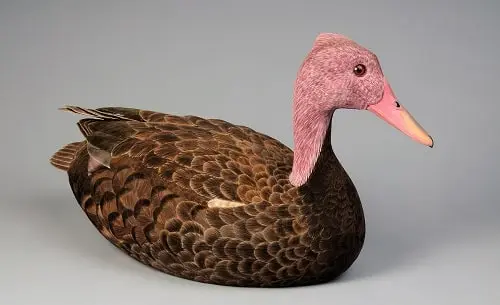When an organism or group of organism terminates from their habitat, it is known as extinction. In other words, it is the death of the last individual of the species. Recovering species from the extinction is next to impossible as the capacity to breed and survival has lost. Exceptionally, some species may survive and reappear after some point of time, which is denoted as Lazarus taxa.
If species are fall under the endangered category, it will be likely to move into the extinct category. An immediate care is required to prevent the extinction of species. Our world is a home to a wide variety of flora and fauna. However, about 99 per cent of all species that are lived in the world have died out and some specimen had collected for the future reference.
A recent study states that more than 14 million species have lived on the Earth, of which only 1.2 million species have documented. Another research reported that about 1 trillion species are survived but only one thousand species are described. With over 45,000 plants and 91,000 species of animals, India is enriched with green mountains, forests, seas, river, desert and much more. A study conducted by the International Union for Conservation of Nature reported that about 8% of the total documented species are found in India. Unfortunately, more and more species are moving into an endangered category and their lives are under severe threat. Here are the top 10 most critically endangered species in India.
List of Engendered Birds in India
10. White Bellied heron.
White Bellied heron is well known as the Great white-bellied heron or imperial heron. Found in the eastern Himalayas, White-bellied heron is the most critically endangered species of India. It is mostly found in Burma, Bhutan, Nepal, India and northeast Bangladesh. With white throats and dark grey skin, the species is found on wetland habitats.
The population has started to degrade slowly due to the habitat degradation and deforestation. International Union of Conservation of Nature has listed this species as the Critically Endangered. The main cause of this population degradation is poaching and the disappearance of wetlands. The species are found along the Pho-chhu Rivers and Punatsang Chu River. Recently, a nesting site discovered in the Tiger Reserve and Namdanphan national park in Andhra Pradesh.
9. Great Indian Bustard
With the long bare legs and horizontal body, Indian Bustard is one of the endangered species in India. The Great Indian Bustard is found on the Indian sub-continent. The species can be seen with blackbuck. More than 250 individuals were estimated in 2011; however, it is found to be the most endangered species in India. Great Indian Bustard is protected and saved under Wildlife Protection Act 1972.
8. Forest Owlet
AthleneBlewitti is known as Forest Owlet, an endangered species found along the forests of Central India. Forest Owlet belongs to Strigidae, traditional owls family. The species are considered extinct since it was not seen during the 1880s. However, Forest owl is rediscovered some years later and the specimen was collected. The collected specimen was stolen from the British Museum. Due to forest degradation and the loss of habitat, the total population of the specimen remains very low.
7. Spoon-billed
Spoon-billed stands at 8th place on the list of top 10 most engendered birds of India. The total population of spoon-billed is fewer than 2000. Some of the threats to its survival are perching, lack of breeding on the tropical region, loss of tidal flats etc. It is mostly found in the Seamengeneum in South Korea. As per the long-term remote sensing report, about 65% of the species in South Korea, North Korea, and China has destroyed by forest degradation, reclamation etc. Apart from the climate change and migration, hunting and bird trappers are the primary cause of the degradation.
6. Siberian Crane
Siberian white crane is also known as Snow crane, which is usually empathized in many south Indian poems. Siberian crane is a kind of cranes, which are critically endangered among the cranes. It has snow white skin and black feathers. The species are mostly found in the eastern and western Russia. The species can be seen in Nepal, India, Iran and other countries where winter is not severe. The species in the east migrate to China during winter. The best part about the Snow crane is it can migrate to long distance but this is the reason why they have declined aggressively in the past decades. It is found that many cranes were caught and got killed along with their migration route. The estimated population of the Siberian White crane in 2010 is about 3,200, Of which 95% species can be seen in the Poyang Lank during winter. There are only ten Siberia cranes found in the Western Siberia.
5. White Rumped Vulture
White-Rumped vulture stands at 5th place on the list of top 10 most engendered species in India. It is categorized as the Critically Endangered species on the Red List of IUCN. It is a traditional vulture type, which is mostly found in the south and south-east Asia. The total population of the white Rumped vulture has started declined slowly since 2000. The estimated population was around one million and it was recorded as the most abundant species of bird. Due to migration and aggressive hunting activities, many have died out and the estimated population was just 10,000 individuals in 2016. The white Rumped Vulture looks like European Griffen and it was accidentally recorded as the oriental white-backed Vulture. The main cause of the decline is diclofenac poisoning due to which vultures died of renal failure.
4. Indian Vulture
Indian vulture is considered as one of the most engendered species in India. The origin of Gyps indicus is Nepal, and India. Being a critically endangered species, it falls under the IUCN Red List. The mass population of the species has been declined since 2002. Similar to the white Rumped vulture, many Indian Vultures are under threat. Due to diclofenac poisoning, Indian vulture died out of renal failure. Indian vulture mostly breeds on fresh mountains and hill areas where green lushes present. Some of the individuals breed in Central and peninsular India. The subspecies of Indian vulture is named as a slender-billed vulture( Gyps tenuirostris). Both the main species and subspecies are treated under the name long-billed vulture.
The botanical name of this slender billed Vulture is Gyps tenuirostris. It is under the IUCN Red List and is reported as the species of Old World vulture. However, it is associated with the species Indian vulture. Slender-billed vulture breeds on the nest and trees. The slender-billed vulture is found in the sub-Himalayan region while Indian vulture found in the South Ganges and south-east Asia.
3. Bengal bustard
Bengal bustard stands at 3 rd place on this list of top 10 most endangered species. Bengal bustard is a kind of Bengal species native to Vietnam, Cambodia and Indian subcontinent. Since 2000, the population has started to slow down and the estimated species were around 1,500 individuals in 2013. The main species of Bengal bustard is found in South East Asia and subspecies are found in the Indian subcontinent. Bengal bustard also found in Assam, Uttar Pradesh, Nepal, Bangladesh
The species move towards southern Vietnam and Cambodian in South East. It breeds on grounds and warmer area. Bengal bustard in Cambodia likes to breed on green bushes and grasslands.
Bengal bustard doesn’t migrate to long distance but is migrated to a few kilometers. Bengal bustard is more likely to migrate to warmer regions during winter.
2. The Himalayan Quail
The Himalayan Quail is also known as Mountain quail. With the medium-sized quail and adorable appearance, Himalayan Quail is found to be the most engendered species of India. The species are found in only North-West India and the western Himalayas in Uttarakhand. There are only 12 specimens found in India. The Himalayan Quail was once found near the hill stations of Mussoorie in 1876. The places where they exist have altered by the current habitats, forest degradation, and other human activities, still, there are many in extinct conditions.
1. Pink-headed duck

Founded in the Gangetic plains of India, pink-headed duck is one of the most endangered species in India. It is mostly found in Myanmar and Bangladesh. A study reported that it may exist in the regions of Northern Myanmar.
More than 57 species are considered as critically endangered species by the IUCN. These species include fish, reptiles, amphibians, spiders, corals. Moreover, these organisms fall under the IUCN red list and will become extinct unless immediate steps are taken. It is the sole responsibility of everyone to conserve the rare species and take care of the environment .To preserve species, India’s Ministry of Environment & Forest takes preventive measures to recover such organisms and prevent some human activities like hunting, forest degradation etc. Conserving rare species of flora and fauna has been the primary goal of IUCN, CITES and other international institutes.
Santosh Kumar, the author behind IndiasStuffs.com, is passionate about sharing valuable insights on a variety of topics, including lifestyle, technology, and Indian culture.
Page Contents

